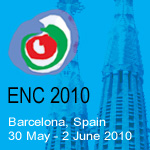 |
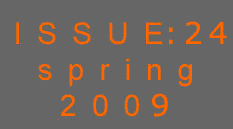 |
Issue No. 24 Spring
|
ENS News |
ENS Events |
Member Societies & Corporate Members |
Nuclear energy and environmental protection: compatible or mutually exclusive? Nuclear Training and Education in an Anti-nuclear Environment Fast track for the revival of old BWR plants Chernobyl, a “cloud” passes by...: Facts and controversy SNE news |
YGN Report |
Young Generation Reporter at Pime 2009 |
European Institutions |
ENS World News |
ENS Members |
Links to ENS Member
Societies |
____________________ |
____________________ |
ENC
2010 |
____________________ |
|
|
|
RRFM 2009, a four-day international conference dedicated to research reactor fuel management was organized by the European Nuclear Society (www.euronuclear.org) in cooperation with the International Atomic Energy Agency (www.iaea.org) took place in Vienna from 22-25 March 2009. A total of 190 experts from 30 countries gathered in Vienna, Austria, to discuss many important issues, including the development of fuel for research reactors, the conversion of highly-enriched uranium (HEU)to low-enriched uranium LEU), the utilisation of research reactors and their operation, maintenance and decommissioning. |
 |

The entire programme of the conference was divided into the six topics: International Issues, Fuel Development, Fuel Utilisation, Innovative Methods in Research Reactor Physics, the Back-end of the Fuel Cycle, Research Reactor Operation and Maintenance.
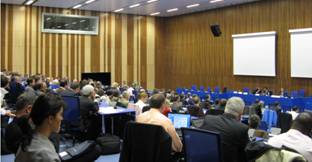
Since a lot of participants were registered for the conference some sessions were carried out simultaneously in parallel. These sessions took place on the 24 March and focused on issues of greatest interest like fuel development, the utilisation of research reactors, innovative methods in research reactor physics and the back-end of the fuel cycle. During the conference a total of 57 presentations were given and then discussed.
In the International Topic session the presentations and discussions focused mainly on the progress of the Jules Horowitz research reactor project; worldwide research reactor coalitions and safety standards for operating reactors.
For the session Fuel Development 15 projects were presented and these generally focused on comparison of HEU with LEU, experimentation, characterisation and improvements of U-Mo fuel. Great stress was also put on the necessity to convert HEU fuel to other fuel that does not pose a risk of global nuclear proliferation.
The Fuel Utilisation session mainly featured presentations about the practical uses of research reactors, their role in life science, material testing, nuclear medicine and applications for environmental and health studies. The shortage of the medical isotope technetium-99m was also discussed in depth and possible solutions were investigated.
The other sessions were shorter in length compared to the aforementioned ones and were orientated towards the validation of various codes for research reactor safety, MCNP simulations, investigation of research reactor aging, decommissioning, the transportation of spent nuclear fuel and final disposal.
Another important part of the conference was the Poster Session, where a total of 23 posters from 16 countries were exhibited. In previous RRFM conferences participants showed great interest in these poster sessions and in order to maintain this success a competition to identify the best RRFM09 poster was announced. First place was shared between two posters and the winners received small gifts during the Closing Ceremony.
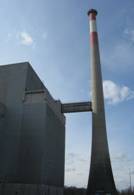 RRFM 2009 concluded with two technical tours during the afternoon of 25 March. Participants could choose between visiting either the TRIGA reactor at the Atominstitut, in Vienna, or the Zwentendorf Nuclear Power Plant. As a Young Reporter, I chose the Zwentendorf NPP since it was a unique chance for me to see the boiling water reactor from close up and to go below the reactor core. This NPP was built at the beginning of the 70’s and, unfortunately, the referendum that was carried out in 1978 in Austria decided that the plant would never produce electricity and so it was immediately shut down. Today, it is a museum showing how nuclear energy partly died in Austria, but it does not mean it will not arise again from museum’s ashes.
RRFM 2009 concluded with two technical tours during the afternoon of 25 March. Participants could choose between visiting either the TRIGA reactor at the Atominstitut, in Vienna, or the Zwentendorf Nuclear Power Plant. As a Young Reporter, I chose the Zwentendorf NPP since it was a unique chance for me to see the boiling water reactor from close up and to go below the reactor core. This NPP was built at the beginning of the 70’s and, unfortunately, the referendum that was carried out in 1978 in Austria decided that the plant would never produce electricity and so it was immediately shut down. Today, it is a museum showing how nuclear energy partly died in Austria, but it does not mean it will not arise again from museum’s ashes.

The conference’s social programme was very well-organised and consisted of a wine & cheese party on 22 March at the Vienna International Centre, an AREVA-sponsored gala dinner at the magnificent Palais Ferstel, on 23 March and the Viennese style RRFM 2009 conference dinner on 24 March. All events were pleasant and relaxed after a hard day’s work at the conference and they allowed participants to socialise in a different and untypical setting.
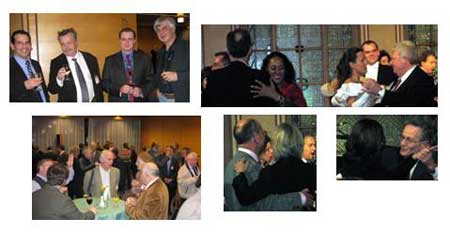
At the end of this report I would like to express my gratitude to European Nuclear Society staff that organised a conference of this dimension without any problem, and for giving me the opportunity to attend RRFM 2009 and share my experiences with other participants. I am also grateful for the financial support of the Czech Nuclear Society and Nuclear Research Institute Řež plc.
By Marija Miletić
Czech Republic
mil@ujv.cz
Mob: +420 608 246 386
| |

